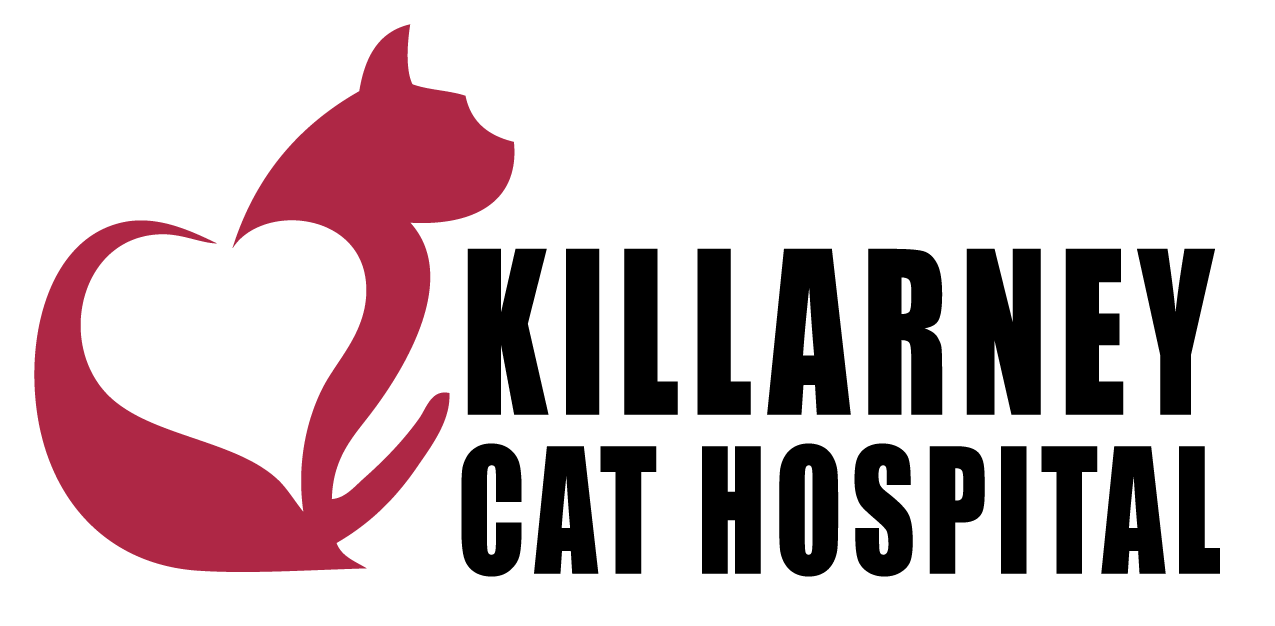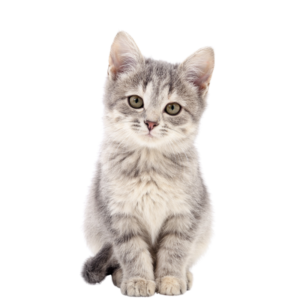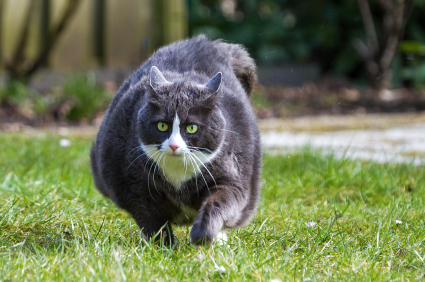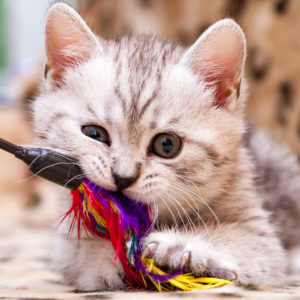Courtesy of the American Association of Feline Practitioners and Cat Friendly Practices
Do you have an overweight cat? Are you sure? The iconic image of the fat cat made popular in comic strips and internet memes has made it so most people don’t even know what a cat with an ideal body weight looks like. It’s quite possible that your feline friend does have a little (or a lot) of extra weight that they are carrying around and your veterinarian can help you determine that.
Health Concerns
Did you know that cats that are an ideal body weight on average live longer lives, potentially adding years onto your cat’s life? Not only that, but they tend to feel better too! Obesity in cats has been linked to many health concerns such as diabetes, liver, and heart disease, to name a few. Fat cells have been shown to release pro-inflammatory mediators into the blood stream predisposing cats to inflammation which can intensify many conditions such as inflammatory bowel disease and asthma – two very common cat diseases. As cats age, arthritis commonly becomes an issue in the joints of their limbs and spine, which is exacerbated by the extra weight that these joints are burdened with.
Diagnosis and Treatment
If you are concerned about your cat’s weight, now is the time to take action and start him or her on their way to a healthier and happier life. You need to involve your veterinarian in the process to make sure the weight is lost in a safe manner. We should be able to design a program for you with weight loss goals, making sure the weight is coming off at an appropriate rate, as well as ensuring that all of your kitty’s nutritional requirements are being met.
Diet
During your veterinary visit, we will discuss the type and amount of food being fed, which may need to be adjusted depending on your individual cat’s needs. Be sure to tell us about treats your cat receives (and don’t forget that little piece from your dinner plate counts too). There are many different types of foods that can be used, including special prescription diets that we can discuss to figure out which works best for you.
It can be hard not to treat your feline friend with all the food and treats they want. But don’t forget that food is only one of the ways that you can spoil them. They can also be rewarded with catnip, play, or just plain-old loving attention. Remember, that many cats eat merely out of boredom, so adding some of the other things they enjoy to their lives can alleviate this as well. Puzzle feeders can also be a great way to slow down eating and provide activity and stimulation.
One problem that is common in multiple cat households is that one cat will steal food from the other cats, making it difficult for owners to regulate. Different strategies can be employed such as controlled meal feeding in separate areas, or putting food where only one cat can access it. There are even devices that can be bought that will only allow a specified cat to access the food based on an I.D. collar or microchip! Discuss the specifics of your situation during your veterinary visit to come up with creative solutions that will work in your home.
Exercise
And don’t forget exercise! Just as in people, activity is an important part of any weight loss plan. Our indoor cats are particularly prone to inactivity, but with a small amount of effort on your part, they can start to get more exercise, which comes with the added bonus of being more mentally stimulated as well!
As you move along in the process and your cat begins to shed the extra weight, you will no doubt see some exciting changes occurring. It is not uncommon to hear stories from amazed owners about how it seems they have a new cat, one that is acting years younger – more playful and active. This is a testament to how much better their cats are feeling, which is a clear improvement of their quality of life.




